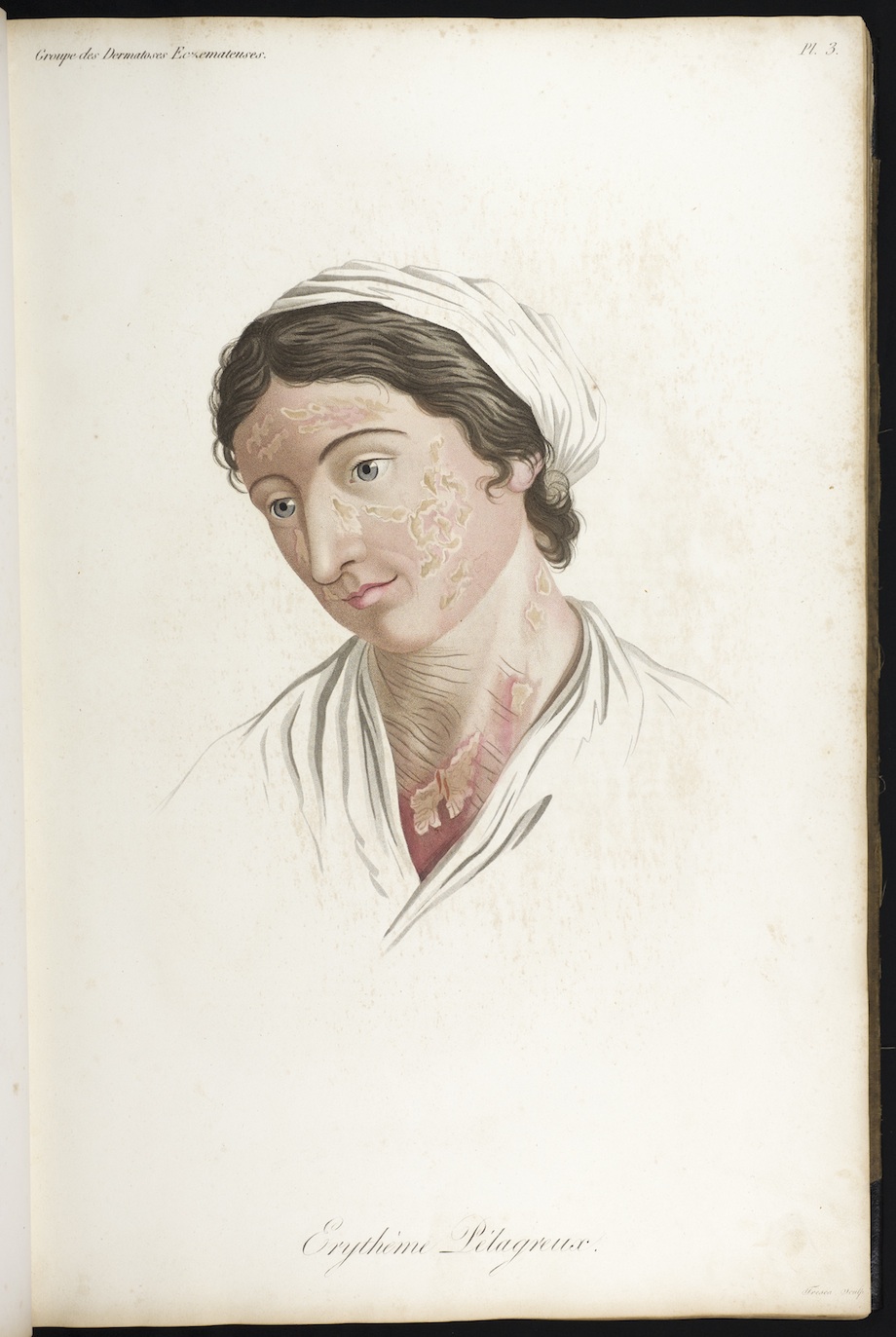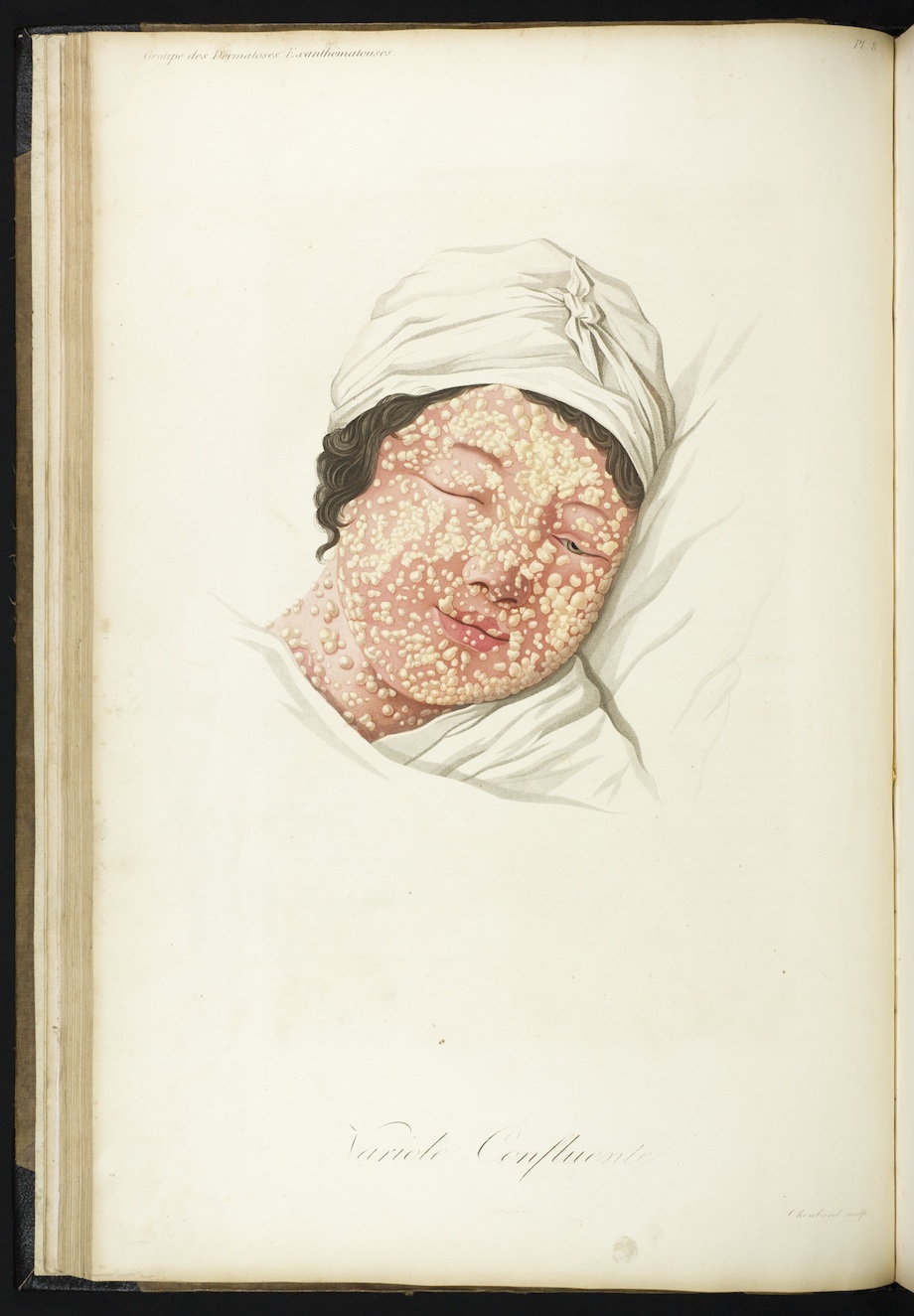By Rebecca Onion, Slate

“Scarlatine Normale” (scarlet fever). Courtesy The Lilly Library, Indiana University, Bloomington, Indiana
These plates come from an 1833 book by French dermatologist Jean-Louis-Marie Alibert with a classically unwieldy 19th-century title: Clinic of the Saint Louis Hospital, or, Complete Treatise of the Diseases of the Skin, Containing the Descriptions of These Diseases and of the Best Ways to Treat Them.
As part of the first generation of color illustrations of pathological skin conditions, the plates show the patient’s whole face in loving detail. While recording the details of skin maladies, the illustrations also note locks of hair, rumpled bedding, and, in the case of one patient with scarlet fever, an intricate ruffled bonnet.
Alibert directed Hôpital Saint-Louis, located north of Paris and, after 1801, dedicated to the treatment of chronic dermatological disease. The hospital treated about 600 people at once on an in-patient basis and drew patients with rare afflictions who had been unable to find help elsewhere.
Alibert had scientific ambitions and became a noted lecturer and teacher. He worked with artists to produce his large and lavishly illustrated books on cutaneous diseases, including the Complete Treatise.
These plates, depicting patients afflicted with strains of scarlet fever, pellagra, and smallpox, represent a new direction in medical illustration in the late 18th and early 19th centuries: a reliance on extremely naturalistic visual representation. Doctors who commissioned such illustrations hoped, as historian Katherine Ott says, that such illustration might “capture what they saw so that others might learn from it.â€

“Erythème Pèlagreux” (erythema caused by pellagra). Courtesy the Lilly Library, Indiana University, Bloomington, Indiana.

“Variole Confluente” (smallpox with a confluent rash). Courtesy the Lilly Library, Indiana University, Bloomington, Indiana.

Recent Comments